When growing strawberries, summer residents have to take special care and attention, because this culture is often attacked by insect pests and suffers from various diseases. Usually, they are fought after picking berries or in spring. But it is much more efficient to process strawberry plantations in the fall. During this period, without fear, you can use potent and effective drugs without fear of spoiling the crop.
Content
Strawberry processing in autumn
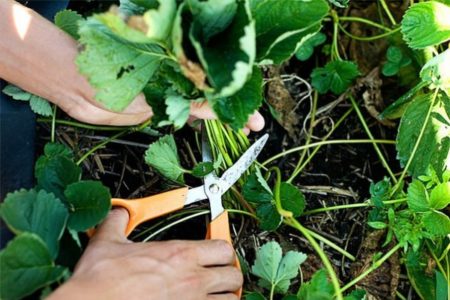
Having carried out preventive treatment of strawberry plantings from infection with pests and diseases since the fall, experienced summer residents increase crop productivity. For plant health, it is important to carry out all the planned activities and conduct them on time. But first, they carry out preparatory work.
Removing dried leaves
The leaves of strawberries and strawberries are the only organ through which photosynthesis is carried out. They grow constantly: to replace the old, dying leaves, the plant releases new ones. The most active growth in green mass is observed in spring and autumn. In summer, under the influence of high temperature, the leaves grow more slowly. In winter, this process stops due to frost. At the same time, fungal diseases spread on old leaves, and young ones are often attacked by pests.
To prevent the spread of diseases and partially relieve strawberries from pests, after picking berries mow the green mass. You can not do this too early when the nutrients have not yet descended from the leaf plates into the stems. Late pruning causes poor flower bud formation.
Transplant and destruction
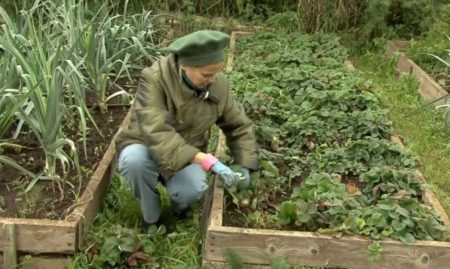
Strawberries are transplanted to a new place as necessary. Usually, with good care, the bushes grow well and give a rich harvest in one place for six years. Then the outlet is dug up and moved to a new site.
If the plants are heavily infected with an infectious disease or pests, resort to extreme measures and completely destroy the strawberry plantings. The bushes are dug up and burned, and the soil is treated with copper preparations and lime for disinfection. Additionally, this site is left unplanned for a year. Then for several years, green manure is grown on it.
Preventative measures
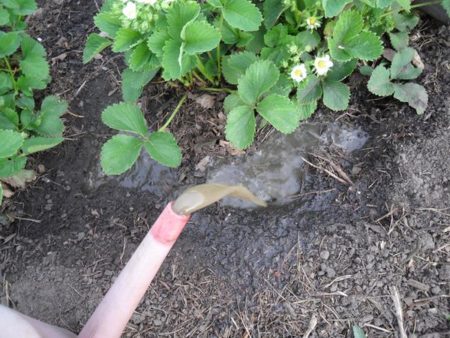
In order not to trouble yourself with the treatment of diseases and the destruction of pests, it is necessary to timely prevent infection. To do this, after cutting the leaves, the following activities are carried out:
- choose the right place for growing strawberries, taking into account which plants used to grow on this site;
- only fully healthy planting material is taken for cultivation;
- in time and in the required quantity make fertilizers;
- weeds periodically fall out;
- loosen the soil;
- To simplify care, strawberries are grown on beds up to 50 cm wide.
Autumn Processing Dates
Before processing strawberries in the fall from pests and diseases, all berries are harvested completely. Depending on the variety, the processing time is shifted. If strawberries bear fruit in summer, spraying is performed in September. For repair varieties Such treatment is carried out in late autumn before the onset of cold weather. Then the bushes are covered with lutrasil or pine conifer so that they do not freeze in the winter.
Pest control
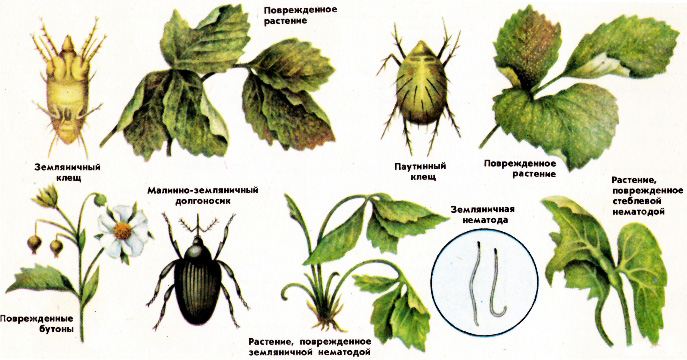
Strawberries belong to those plants that are very attracted by pests. Therefore, to obtain a quality crop, you have to make considerable efforts. The fight will be all the more successful the earlier it is launched. And if agricultural practices are applied correctly, the risk of infection is minimized.
Whitefly
Whitefly is a tiny butterfly up to 1.5 mm in size. It has two pairs of whitish wings covered with a wax-like coating. This insect lives on the bottom of the leaves and sucks out the juice from them. In the same place, adults lay eggs, from which larvae later hatch. They also eat plant juice.
To combat whitefly use a solution of the drug "Actara". To begin with, dissolve 4 g of the drug in 1 liter of water heated to +25 degrees. Then pour 250 g of the concentrate into the tank of the backpack sprayer and fill the container with water for 1/4 of the volume. After thoroughly mixing the solution, strawberries are sprayed in the fall.
As an alternative, the drug "Intravir" is used. 1 tablet of the substance is dissolved in 1 liter of water. Then the concentrated solution is diluted with 9 l of pure water.
Ticks
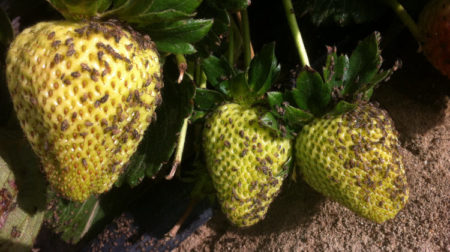
Strawberry mites are almost impossible to see on the plant, since their length is only 0.2 mm, and their body is translucent with a yellowish or brown tint. Their invasion leads to the fact that the bushes grow dwarf size. To combat them use a solution of "Karbofos" at a concentration of 0.3%. To prepare it, dissolve 30 g of the substance in 10 l of water.
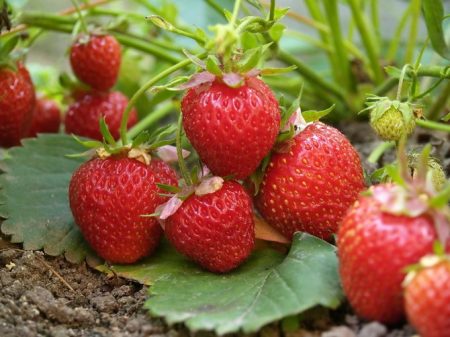 You may be interested in:
You may be interested in:Spider mites are tiny insects up to 0.5 mm long with a whitish body. You can detect their presence by the web and light points on the upper side of the leaves. To combat them, strawberries are treated with the poisonous preparations Apollo, Fosbezid or Nero. They can be replaced with a safe solution of "Fitoferm" prepared from 1 ampoule of the drug and 1 liter of water.
Weevil
Outwardly weevils look like small bugs of black color with an elongated body up to 2 mm long and bulging eyes. They lay their eggs in unblown flowers, from which then larvae appear and eat the middle of the bud. You can detect them by punctures on the leaves. So, an insect drinks juice from them. To combat weevils, strawberry bushes are sprayed with “Actara”, “Iskra-bio” or “Intavir”.
Nematode

To detect the nematode, strawberry bushes are examined in early September. At this time, small colorless worms up to 1 mm long often appear on the foliage. It is very difficult to detect them, so they pay attention to changes in the plant itself. A sign of the presence of nematodes is swelling on the stems and leaf blades, curvature and reduction of the petioles.
Destroy the nematode with chemicals or folk methods will not work. The infected plants are dug up and burned. The soil is disinfected by applying lime. On this site, plants can not be grown for a year. And planting strawberries is prohibited for several years.
Grain and Strawberry Leaf
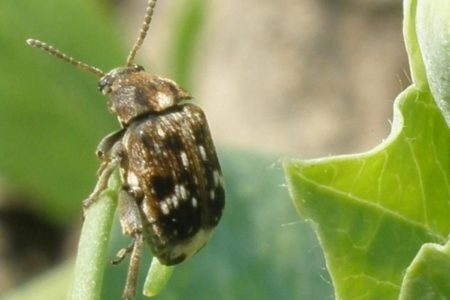
The grain is a relatively large black beetle with a body length of 1 cm. This motile insect eats strawberry seeds and eats the flesh around them, which makes the berries look ugly.
Strawberry leafworm caterpillars can be recognized by the transparent web with which they encompass plant leaves. They prefer to eat the green part of strawberry bushes and sometimes berries.
To destroy these pests produce autumn processing of the culture with a hot solution of potassium permanganate. Onion husk infusion also helps. To prepare it, 200 g of raw material is soaked in 10 l of heated water and insisted for 5 days, and then the bushes are sprayed.
Processing of berries in the fall with garlic helps from pests and diseases. To do this, grind 200 g of vegetable and pour 10 l of water for 3 hours, and then treat the plants.
Other pests
Brown bugs up to 4 mm long are strawberry leaf beetles. They settle on the leaves of strawberry bushes and devour them. Aphid settles there. Strawberry Processing from these pests comes down to spraying with an iodine aqueous solution, Nitrofen or Nurell-D preparations.
The slugs and snails that eat strawberries are removed manually and then destroyed. You can scare them away by spreading the granules of the “Metaldehyde” preparation next to the plants.
Disease control
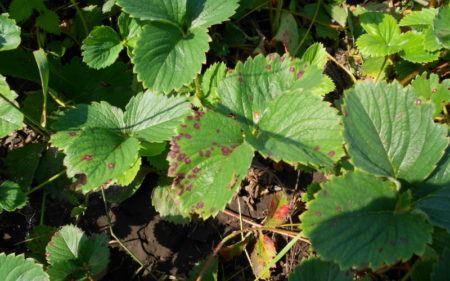
A universal way to get rid of many diseases of strawberries is treatment with copper sulfate. To do this, prepare a solution by mixing 10 liters of water and 3 g of blue crystals. Plants are sprayed with this liquid and then closed to preserve them in winter frosts.
Also, processing the culture in the fall from pests and diseases with a soapy solution of the same copper preparation also helps. It is prepared from 3 l of boiled cooled water, 5 g of substance and 200 g of grated laundry soap. Having thoroughly mixed everything, the liquid is poured into the atomizer and the planting is processed.
Gray rot
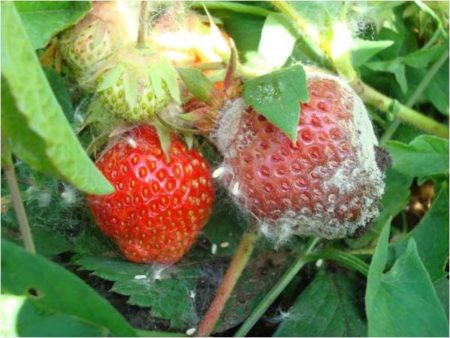
This disease is characterized by the appearance of a grayish gun on the berries. From this they rot and become covered with a gray pale, flying out of the spores. You can fight gray rot with the Fito-Plus or Fitosporin preparations. They are bred and used according to the instructions on the packaging. A solution of 1 liter of water and 1 tsp also helps. Bordeaux fluid that needs to be sprayed with plants.
Powdery mildew
This disease is manifested by a thin, resembling a cobweb, plaque on the surface of the leaves. They become covered with rust spots, deform and twist up. The berries are covered with a whitish bloom with a moldy odor, and then dry out.
The drug “Sulfaride” helps to cope with this disease. In 10 liters of pure water, 2 tbsp. l this remedy and process infected plants.
White, brown and brown spotting
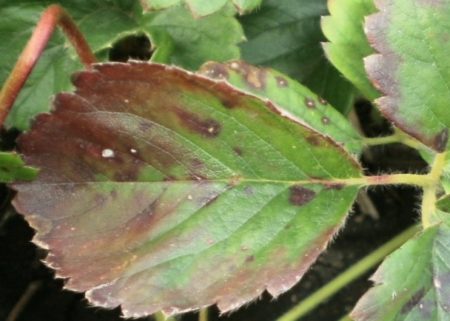
When infected with brown spots or cladosporiosis, the plant becomes covered with rounded brick-red spots. First, spots appear along the edges of the sheet plates. Then they grow and become covered with dark pads of mycelium. The cause of this disease is abundant moisture, weeds or thickened plantings.
White spotting or ramulariasis can be recognized by small round spots of brown shade with white dots. They cover the stems and leaves.
You can get rid of these diseases by watering the bushes in early autumn with a solution of the Fitosporin preparation. The Zircon product also works well. Effectively eliminates all types of spotting copper chloride. In a bucket of heated water bred 1 tbsp. l drug and handle planting.
Black root rot and viruses
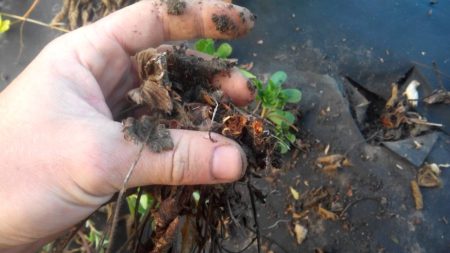
In plants infected with black root rot, the lower tier of foliage first acquires a brown color, and then dries and dies. Sick bushes out of the soil without any effort. Upon closer examination of the root system, cracking of the main core root is visible. Young roots in such plants die.
Infection with viruses manifests itself in different ways. In spring, the leaves become kinky, and in the fall they turn yellow at the edges.In summer, a mosaic virus rages, provoking the appearance of yellow spots on the leaves.
Late blight
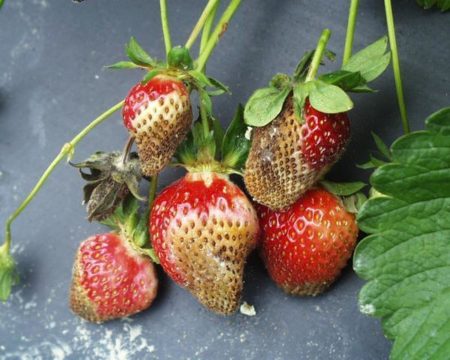
The cause of this disease is frequent rains and high air temperature. Late blight is manifested by small spots of gray-brown color on the surface of leaf plates. The fruits are deformed, lose their taste, and then completely dry out, covered with brown spots. To eliminate this disease, after harvesting, the berries are sprayed with “Switch”, “Euparen” or “Topaz”.
Verticellum wilting
This is a fungal disease, manifested by a decrease in productivity and the gradual death of the bush. Infection occurs through the root system, into which the mycelium penetrates. This causes the roots to dry out and slow growth. Then the leaves acquire a red-yellow hue and fall down. The fight against this disease boils down to the destruction of infected plants.
Chlorosis
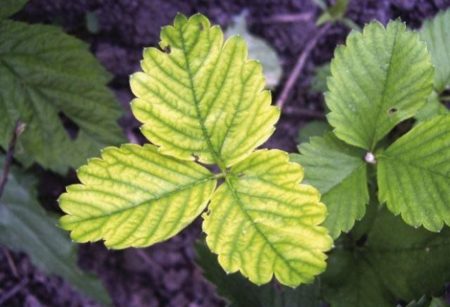
The cause of this disease is the lack of certain elements. What kind of substance is lacking in the plant can be judged by appearance. With iron deficiency, foliage acquires a whitish or yellow hue, but the veins retain their natural color. In this case, the bushes need to be watered with iron sulfate in the fall.
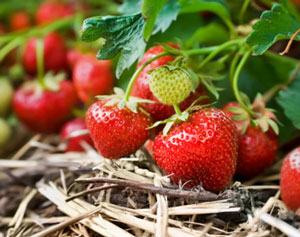 You may be interested in:
You may be interested in:From a lack of magnesium, large strawberry leaves turn yellow. The color change begins at the edges and gradually spreads to the entire plate. In this case, preparations containing magnesium will help.
Conclusion
Autumn preventative treatment of strawberry plantations is more effective than spring activities. Such actions significantly reduce damage from fungal diseases and protect against the attack of harmful insects throughout the growing season.

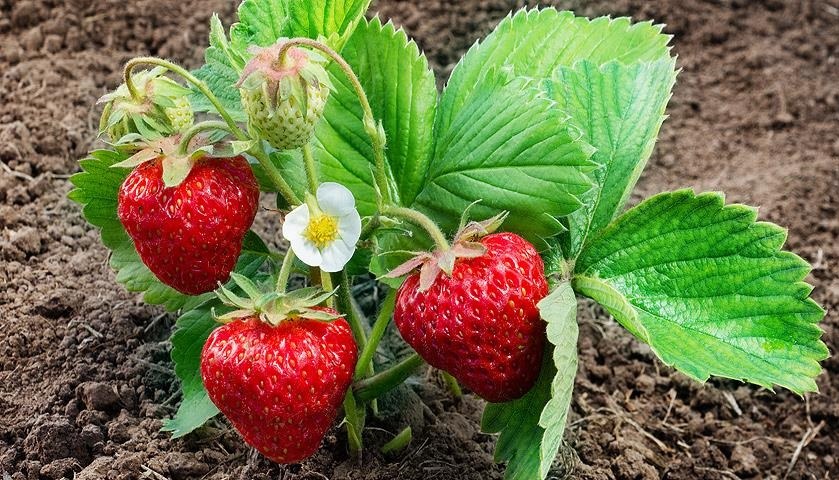
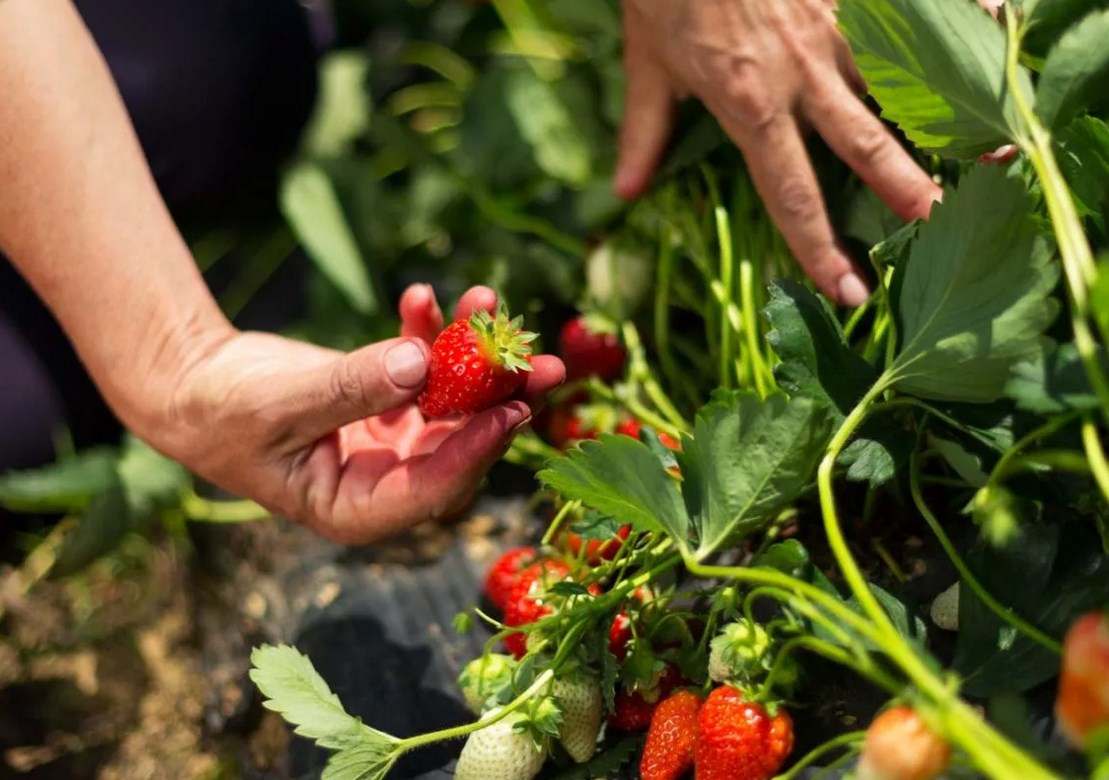
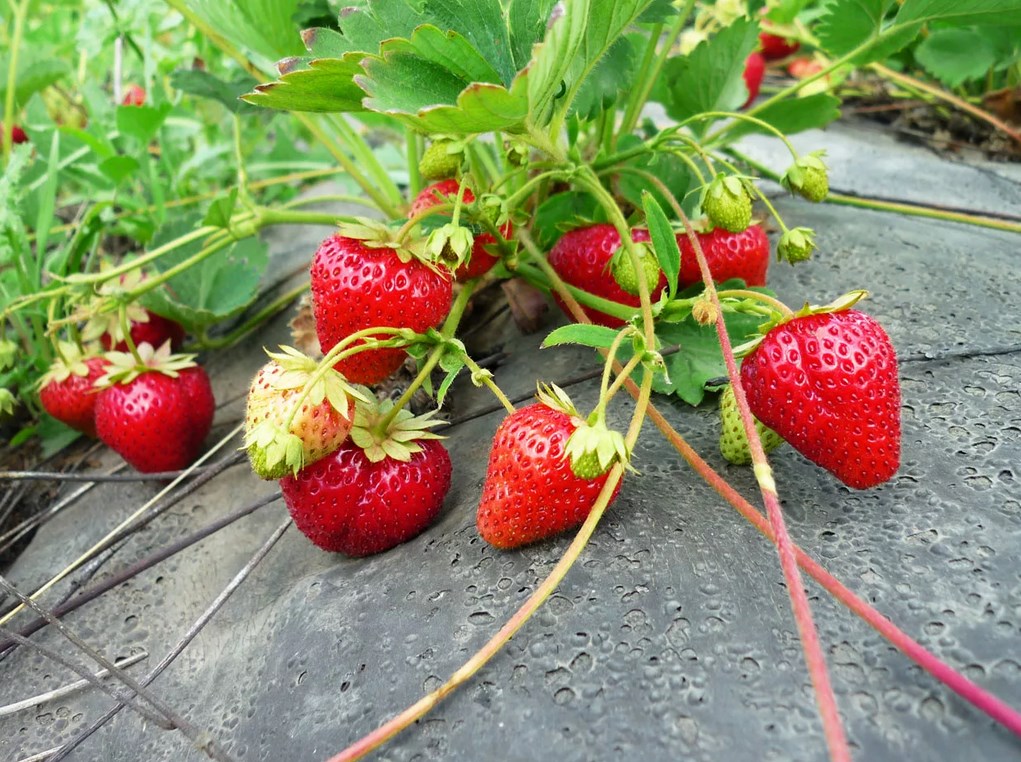
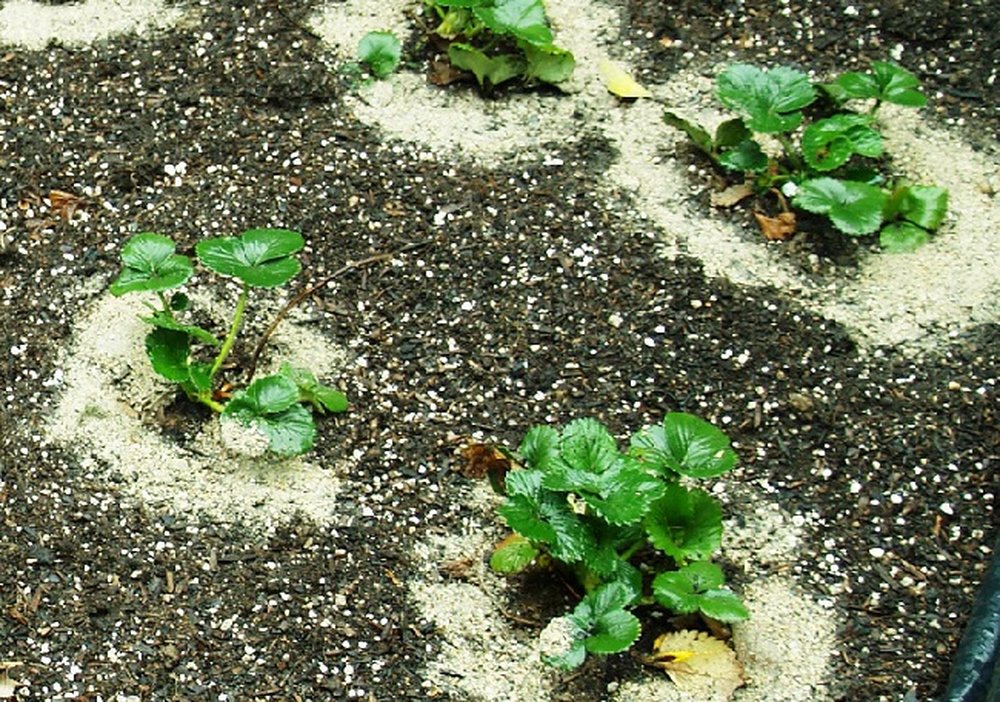 When to plant strawberries for seedlings from seeds in 2024
When to plant strawberries for seedlings from seeds in 2024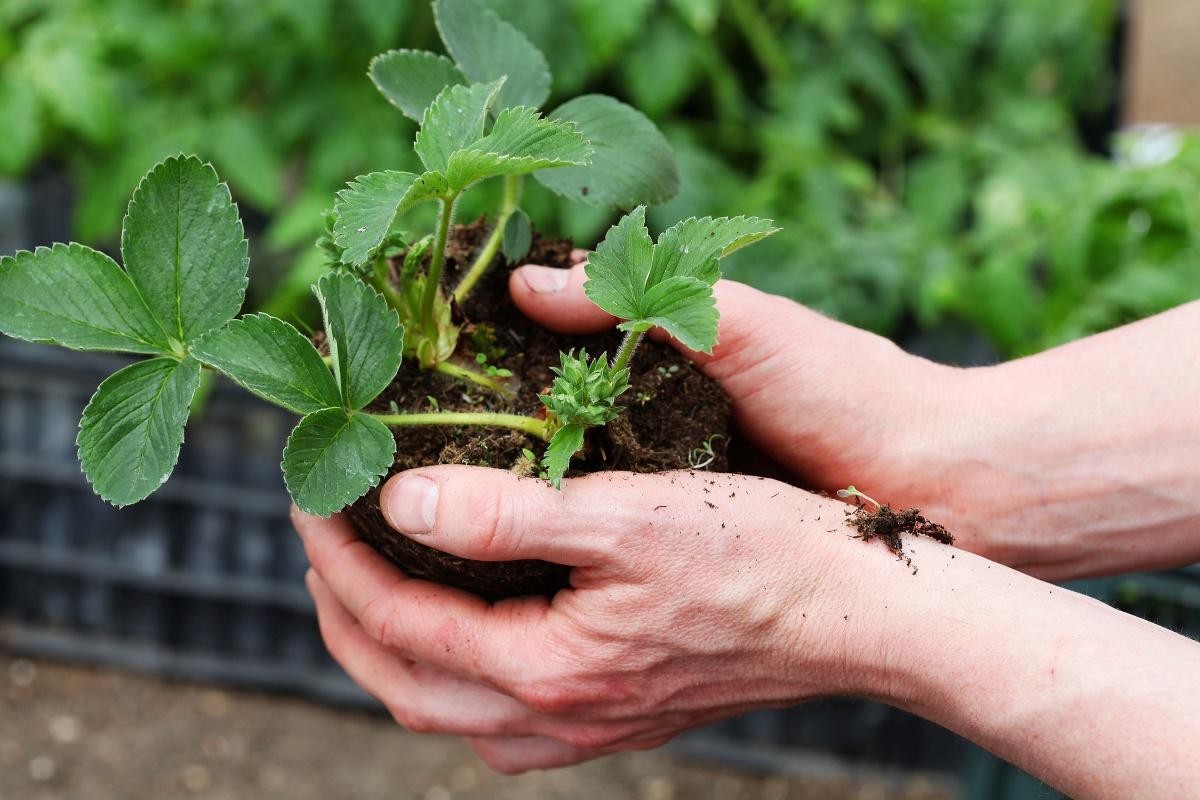 What month is better to choose for a strawberry transplant in the fall
What month is better to choose for a strawberry transplant in the fall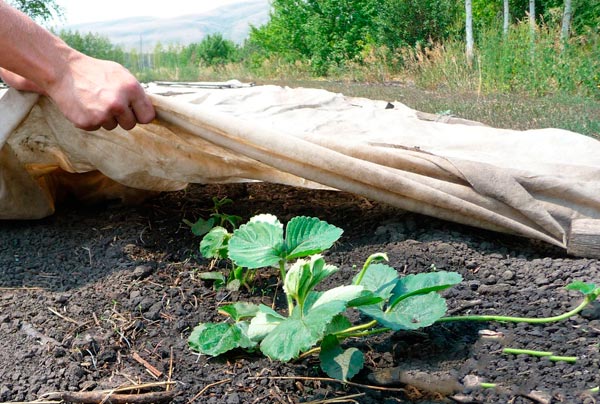 How to cover strawberries for the winter
How to cover strawberries for the winter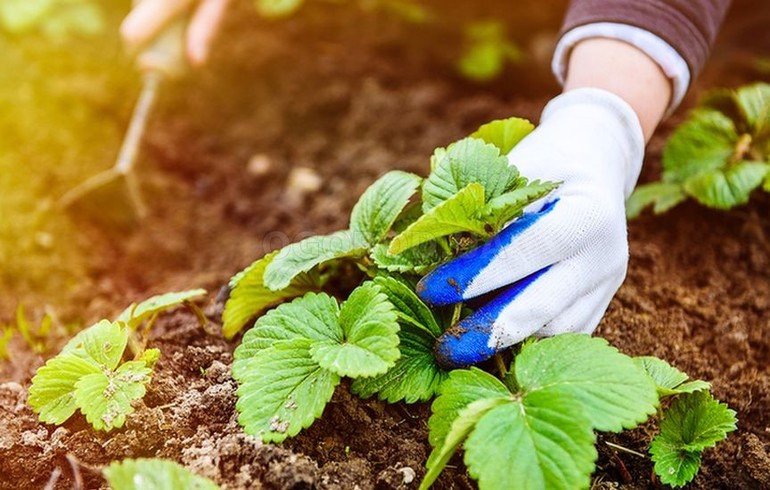 Proper care and pruning strawberries in the fall in the suburbs
Proper care and pruning strawberries in the fall in the suburbs